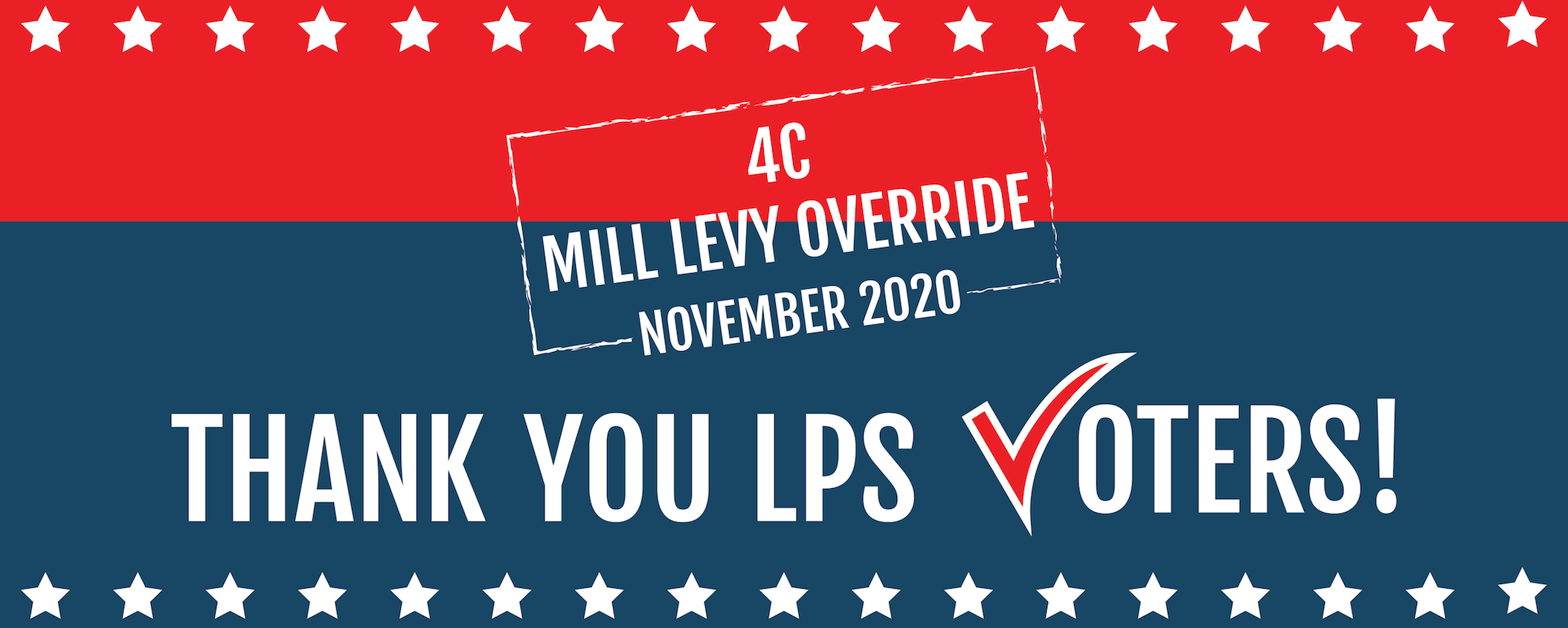LPS Voters Approve 4C
LPS Voters Approve 4C

Unofficial results indicate LPS voters approve ballot issue 4C;
4C will raise $12 million locally to keep LPS on track as state funding crisis worsens
Thanks to the generous support of the Littleton Public Schools community, unofficial results indicate that Mill Levy Override 4C passed last night with 57.88% approval. Measure 4C allows LPS to raise $12 million locally to fill the $12 million state funding gap for the 2021–2022 school and in the years ahead.
The Colorado Debt-Free Schools Act says that a school district can “impose an additional mill levy for the sole purpose of funding capital construction, new technology, existing technology upgrades and maintenance needs of the district without borrowing money.”
Passage of 4C will raise roughly $12 million in the first year and each year thereafter to contribute to expenditures that fall under those categories. This will, in turn, free up $12 million from LPS’s general fund that is currently spent on projects in those categories. The district can now use that $12 million of freed-up general fund dollars to continue to attract and retain quality teachers, maintain counselors and mental health support, and expand programming such as career tech – the very things the LPS community says it values most in its schools. The Board of Education may increase this amount by one mill per year not to exceed five additional mills.
The LPS Board of Education began exploring local solutions to the district’s worsening budget challenges last January. After making $4.2 million in cuts for the 2020–2021 school year, and with projected cuts of at least $12 million for 2021–2022 (and beyond) looming, the LPS Board recognized that these budget cuts would negatively impact the academic excellence this community values and expects of LPS if local solutions could not be found. The COVID-19 economic downturn in Colorado and the state’s chronic inability to adequately fund its public schools escalated LPS budget concerns. Over the past decade, the Colorado Legislature has shortchanged LPS of more than $156 million.
“We are extremely grateful for the support of the LPS community in passing 4C. Thanks to the voters, LPS will have a much better chance of weathering the COVID storm and the state’s economic crisis while continuing to provide our community’s children with an outstanding education, said Jack Reutzel, LPS Board of Education President. “This was a particularly difficult time to ask our community to support a local mill levy override, and we never take the decision to do so lightly. Our schools belong to the community; it was important that the community have an opportunity to decide what the future of LPS should look like.”
“Passage of 4C was arguably the most important factor in the success of LPS moving forward,” said LPS Superintendent Brian Ewert. “Without it, LPS would have had to make devastating cuts to people and programs. It would have changed the face of the district. Now, LPS has a fighting chance of keeping the level of excellence our community expects and deserves for its children, and we are grateful. On behalf of the entire district and the Board of Education, I want to thank not only the generous voters but also all of the volunteers in the Citizens for LPS campaign who worked tirelessly to pass 4C. It truly makes all the difference.”
If the Colorado Legislature chooses to make even further cuts to K–12 education during the upcoming legislative session beyond what is projected, LPS may still have to make strategic budget reductions.
What’s next?
- November 12, 2020: The Board of Education is scheduled to certify the preliminary election results.
- December 10, 2020: The Board will receive an update from the LPS Financial Advisory Committee and will certify the 2021 mill levy.
- January–May 2021: The Board will continue its conversations and planning before the 2021–2022 budget must be finalized in June 2021.
- The LPS Financial Advisory Committee will review the use of the new dollars to ensure that the funding is used wisely for the purposes that were represented to the voters.
